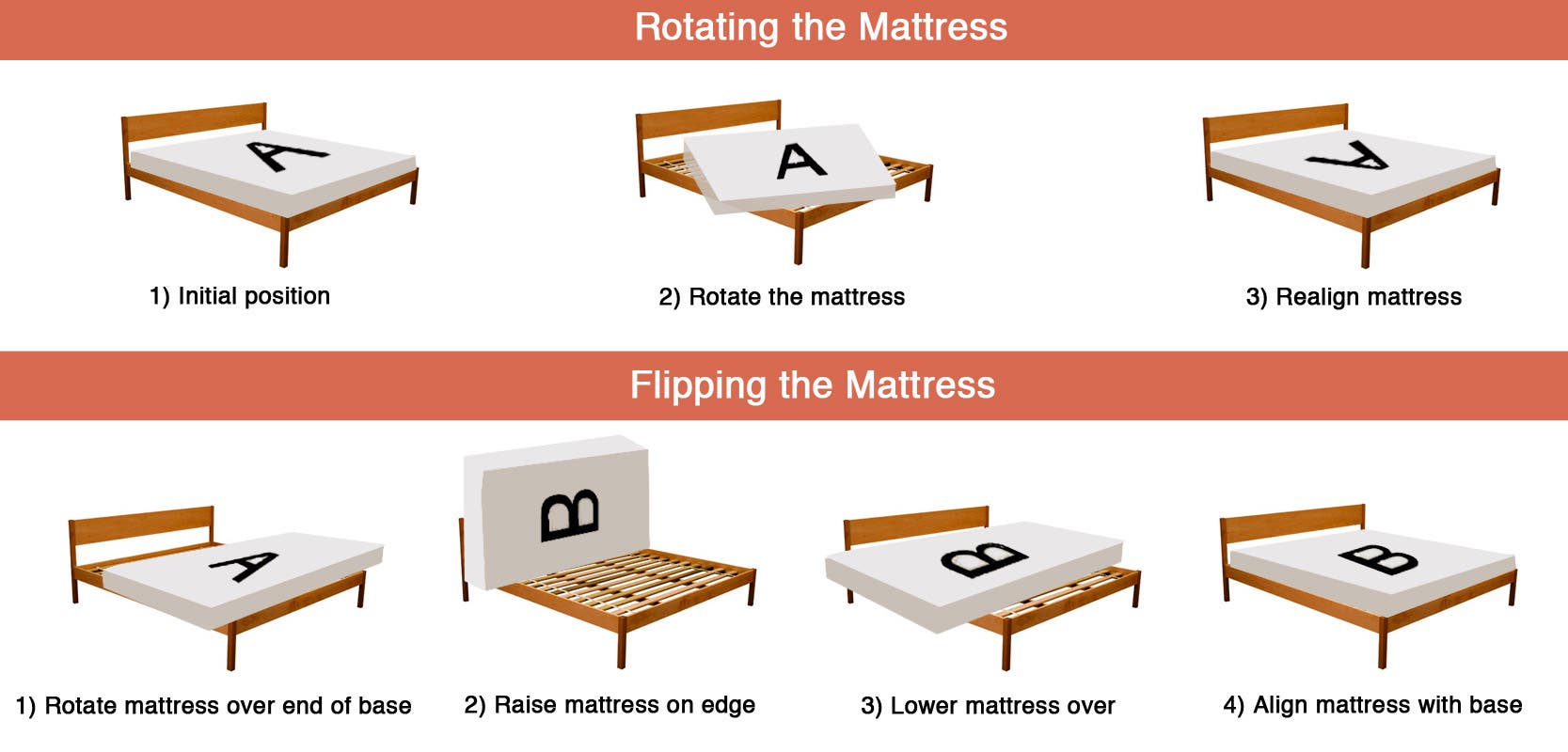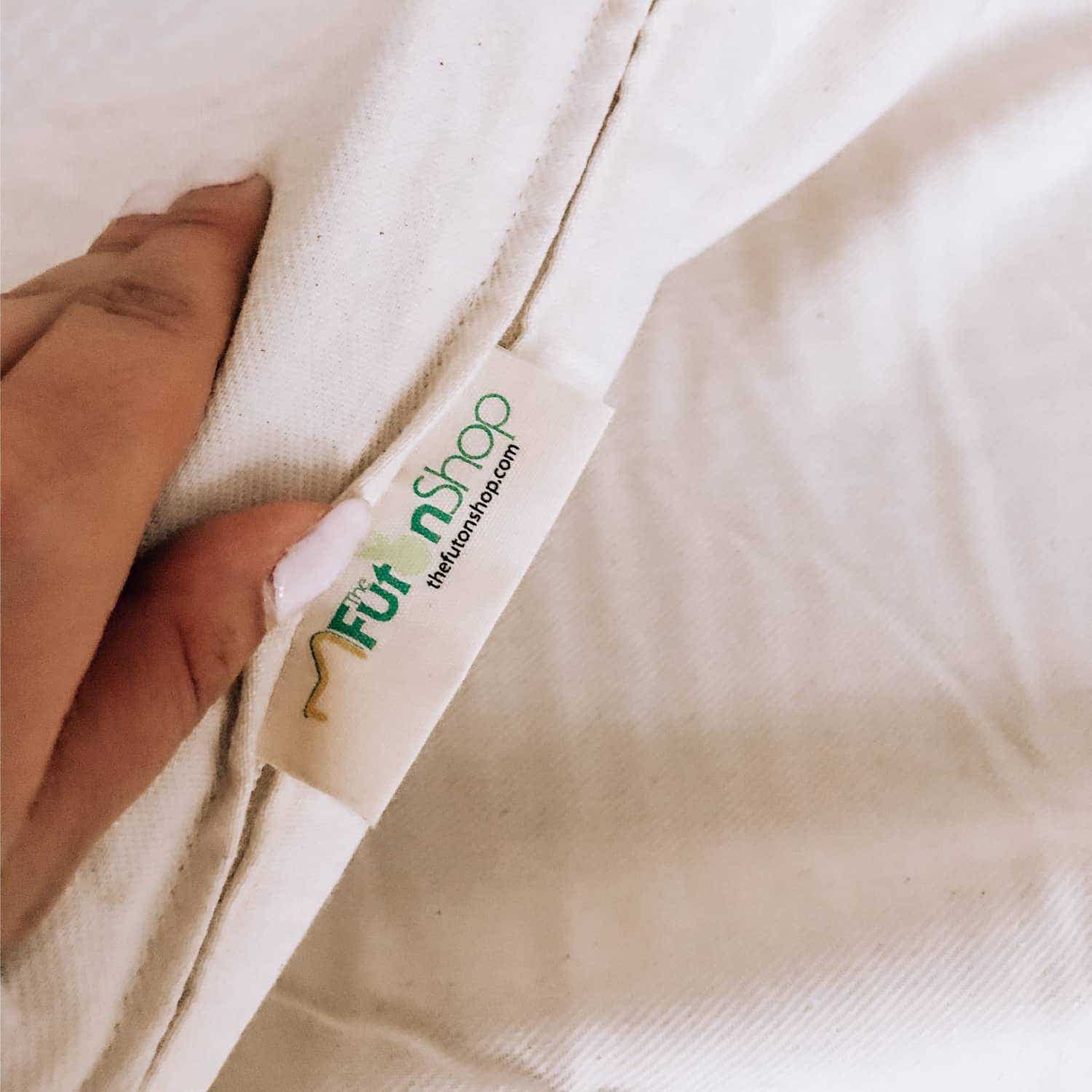
Why Rotate My Mattress?
The purpose of rotating and flipping your mattress or futon is to control the compression of your mattress. Compression is caused by weight and heat. A new mattress will begin to settle after the first few weeks to months of use. If you sleep in the same spot every night, your weight will cause the materials to settle unevenly creating depressions. Heat also causes depressions in mattresses containing foam. Polyurethane foams, memory foams and gel foam contain open cells (holes). Over time, the heat from your body breaks down the cell structure of the polyurethane foam inside your mattress. Rotating or flipping (if possible) will allow for even settling, preventing dipping. This is why it is important to rotate and flip you mattress so you are not always sleeping on the same spot.
What About Non-Flip Mattresses
Many mattresses and futons are designed to be one sided and are not designed to be flipped. It is still important to rotate your mattress. People tend to sleep in the same spot all the time, so that spot gets more body impressions, heat and movement than other parts of your mattress. One partner might be heavier than the other so rotating the mattress gives relief to the side that the heavier partner sleeps on. Especially when a mattress or futon is new. It is important to flip and rotate it often so it breaks in evenly during the first few months of use. If you get a mattress with many comfort layers of natural fibers you need to rotate the mattress or futon to ensure that the comfort layers compress evenly.
What If I Have An Older Mattress
If flipping your mattress is news to you and you have an older mattress, more than likely you are already feeling the affects on uneven wear. Depending on the length of time you have had your mattress, it may not be too late. Setting your mattress in the sun for several hours can help revive your mattress. You should continue to flip and rotate your mattress regularly.
Do All Mattresses Need To Be Flipped?
It is being said that the days of flipping your mattress are slowly coming to an end, thanks to new technology and innovation in mattress construction. This can be misleading as flipping and rotating are not the same. But don't be fooled, these new and improved mattresses may be non-flip, but they still need to be rotated to prolong the lifespan. New mattresses should be rotated, on average, every 3 months. But use your best judgment and if you feel a bit of a sag or can see one with the naked eye, it might be best to rotate your mattress more often. Cotton needs to be rotated quarterly. When a mattress is new it should be rotated every time you change your sheets for the first 3 months than quarterly after that.

LEARN MORE









